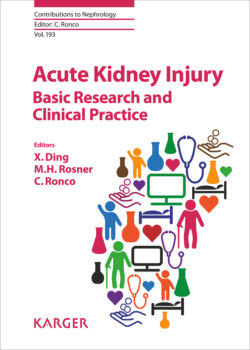Читать книгу Acute Kidney Injury - Basic Research and Clinical Practice - Группа авторов - Страница 25
На сайте Литреса книга снята с продажи.
Quality Measurement and AKI Risk Assessment
ОглавлениеQuality and safety are factors that are increasingly becoming important to be fulfilled in medicine. However, a formalized pattern has been emphasized to implement and monitor measures to assess the quality and safety of care delivered to patients. Quality and safety are critical priorities in the care of critically ill patients. For patients with AKI, measures and outcomes associated with quality of care have been increasingly important. Priorities for improving quality of care incorporate many important aspects including risk assessment, early diagnosis, monitoring, and strategies for management. Some quality improvements have been reported focusing on AKI management [10, 11]. These have contributed to the development of a consensus diagnosis for AKI and clinical practice guidelines for AKI. However, recent literature showed that the quality of care received by patients with AKI remains poor in some underdeveloped countries [12], and this may increase morbidity and mortality associated with iatrogenic complications and suboptimal quality of care [13].
The risk factors for AKI are well estimated [14–19]. This leads to the recommendation that all admissions should undertake an AKI risk assessment so that modifiable risks factors can be identified and attenuated in a timely phase. The issue of preventability is critical, as the costs associated with AKI are high, both in the short and long term [20].
Framing AKI as a driver of substantial inequity in disease risk and mortality in developing countries, the ISN has created and launched the multifaceted human rights program “0 by 25,” which advocates that no one should die of untreated AKI, with a focus on low- and middle-income countries in Africa, Asia and Latin America [8]. In the 5-R approach proposed by “The ISN 0 by 25” project: risk assessment, recognition, response, renal support and rehabilitation, the first 3 Rs focus on the prevention area. Similarly, we must focus on simplifying every step to allow primary care providers to implement these measures regardless of their work environment. Thus, the quality of AKI risk assessment with proper measure applied is priority.
Fig. 1. Plan, Do, Study, Act (PDSA) circle model. Plan = the change to be tested or implemented. Do = carry out the test or change. Study = data before and after the change and reflect on what was learned. Act = plan the next change cycle or full implementation.
